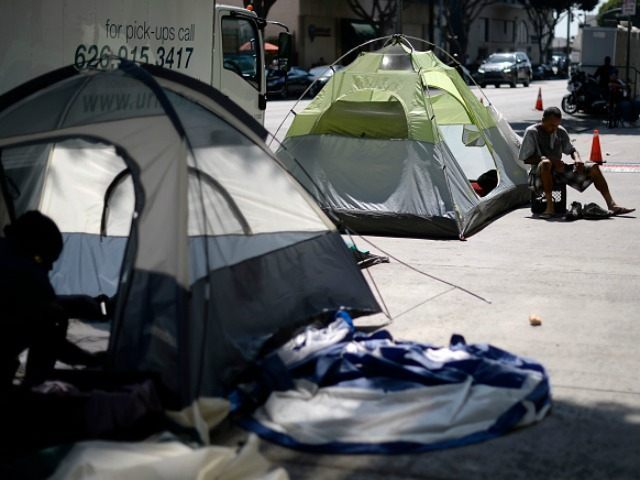Drug rehabilitation or “rehab” centers are increasingly being seen as a contributing factor in the homeless epidemic that has swept across the Golden State.
“There’s evidence to suggest a portion of the growth [of homelessness] in some Orange County cities, and to a lesser degree in Los Angeles, can be attributed to the rehab industry’s aggressive recruitment of addicts – and their lucrative insurance payments – from around the country,” the Orange County Register noted in a recent article.
The issue rests in the fact that the drug rehab centers’ business models actually wind up leaving addicts stranded on the streets. The rehab model is also highly lucrative, bringing in hundreds of thousands to millions of dollars per year.
Often, once a patient’s insurance money runs out, rehab homes and facilities will kick him or her out on the street, which results in relapse and, often, homelessness.
According to the National Institute on Drug Abuse, over 60 percent of people who receive drug rehabilitation will relapse. Many of these individuals wind up homeless.
In 2015, Forbes reported:
The National Council on Alcoholism and Drug Dependency estimates that over 23 million Americans (age 12 and older) are addicted to alcohol and other drugs. According to the Substance Abuse and Mental Health Services Administration (SAMHSA), just under 11% (2.5 million) received care at an addiction treatment facility in 2012. SAMHSA also estimates that the market for addiction treatment is about $35 billion per year.
According to Los Angeles County’s annual homeless count, the region’s homeless population has grown 23 percent since 2016. The study also found that the number of homeless people in L.A. County whose last residence was out of state increased by 21 percent.
The Register points out that in Florida, there is a strong link between rehab and drug-treatment facilities and homelessness, and particularly in Palm Beach County, where government counts reportedly found a 73 percent increase over the past two years in the number of homeless youth between the ages of 18 and 24.
“The (rehab patients) are not going back home to the Northeast,” Palm Beach County State Attorney Dave Aronberg, who leads the county’s Sober Home Task Force, told the Register. “The incentives are too great to remain here: the free rent, the free transportation, the lifestyle. They’ve set up these individuals for failure.”
Adelle Nazarian is a politics and national security reporter for Breitbart News. Follow her on Facebook and Twitter.

COMMENTS
Please let us know if you're having issues with commenting.